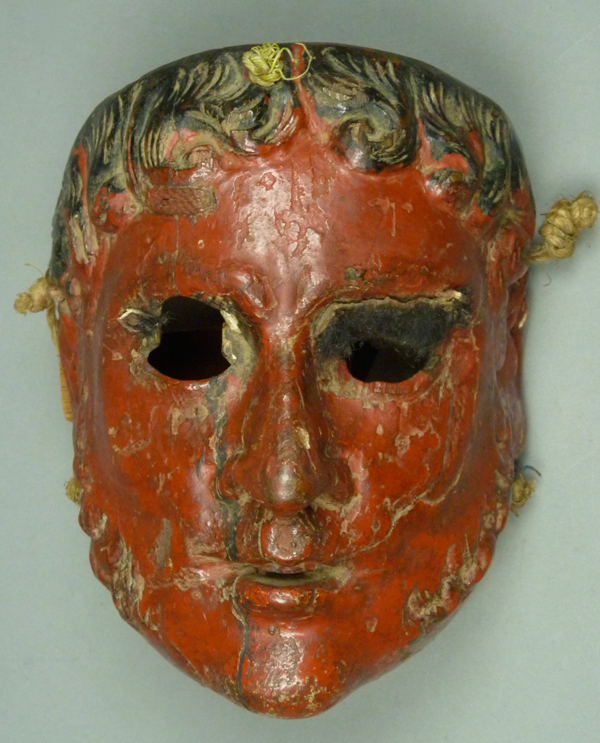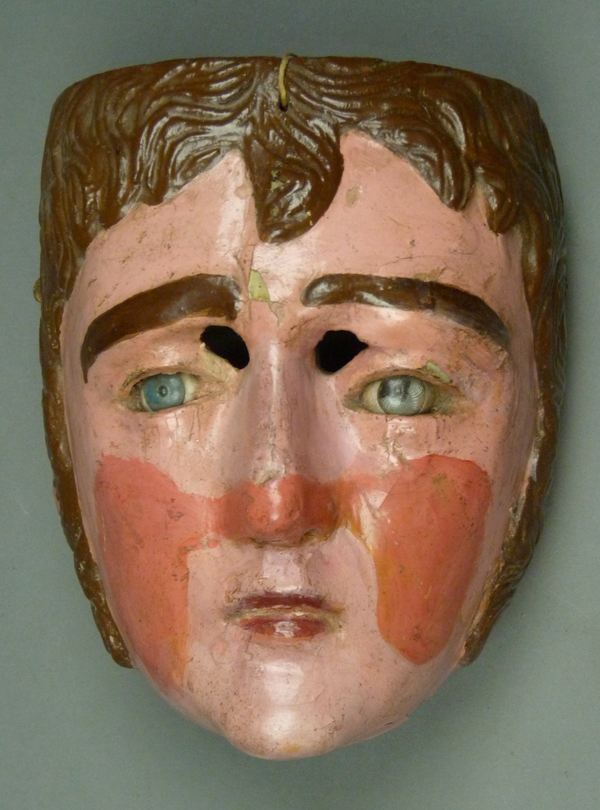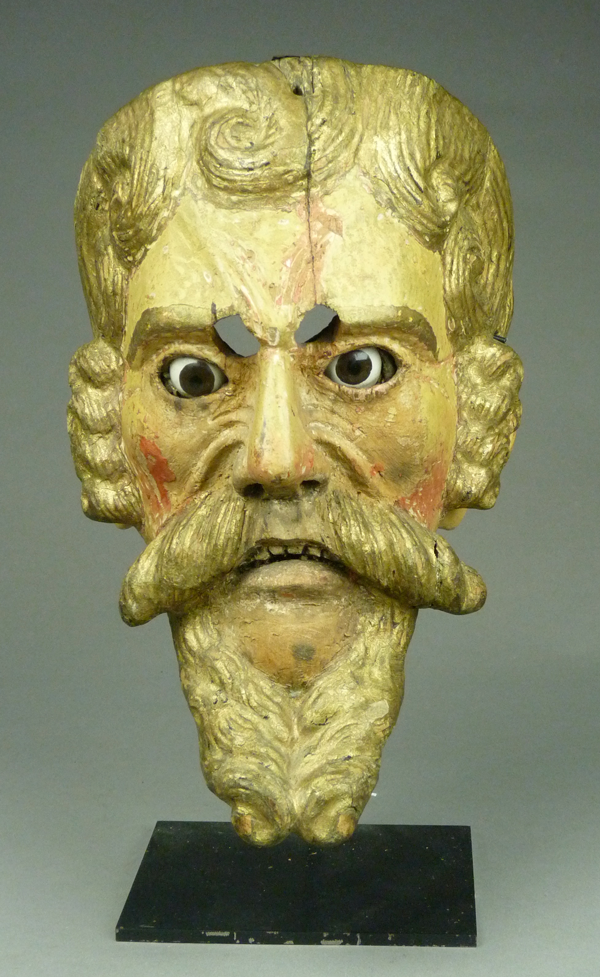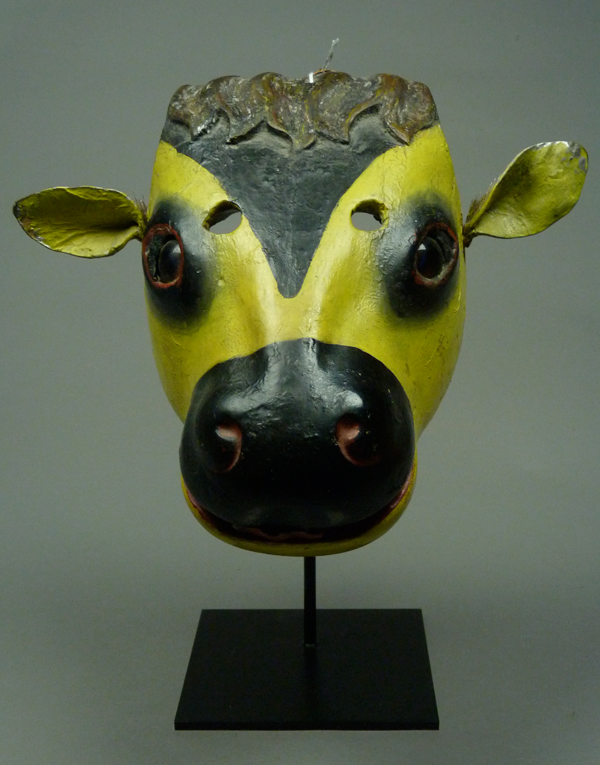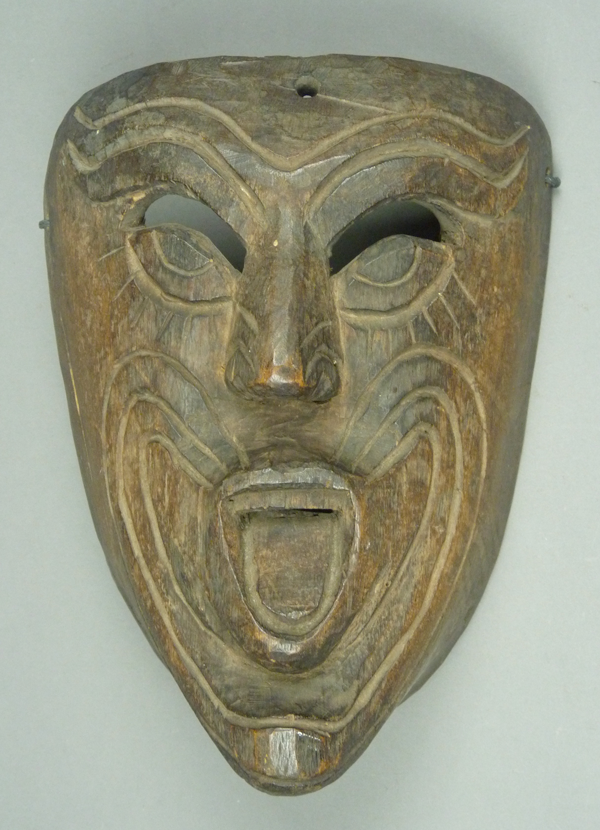As you may know, Spain had been ruled by Muslim conquerors for many centuries and the last Moorish armies were driven from Spain in 1491. It was claimed that the Spanish armies were led to victory by Santiago, the reincarnation of Saint James the apostle. The Spanish celebrated the defeat of the Moors by creating a dance drama—Los Moros y Cristianos, which they taught to the Indians of the Americas to emphasize the power of the Christian God. This performance was quickly adopted in Guatemala. According to Barbara Bode, in The Dance of the Conquest in Guatemala (1961), the Moros y Cristianos “became the inspiration for plays that adapted the theme of conquest to the New World and to local heroes” (page 211). On the basis of this history, that the Moros y Cristianos came first and the other dances later, 20th century North American mask collectors have assumed that the older masks could only be from the Moros y Cristianos dance. To further simplify, every older mask of an archaic style has simply been called a “Moro.” Here is one of those “Moro” masks. The mask of Don Pedro Portocarrero in last week’s post was a more recent example of this form.
I bought this mask from Robin and Barbara Cleaver in 1992; they had obtained it from Spencer Throckmorton. In his 1988 book, Guatemalan Masks: The Pieper Collection, Jim Pieper speculated that such masks, with their extremely dark patinas, might be 150 to 200 years old. While this may be so, definite proof is lacking. As I noted last week re the Pedro Portocarrero mask, this version that lacks a mustache or goatee can represent a male or a female figure. These masks are very beautiful. Similar masks appear in Pieper’s 2006 book, on pages 149 and 184.

